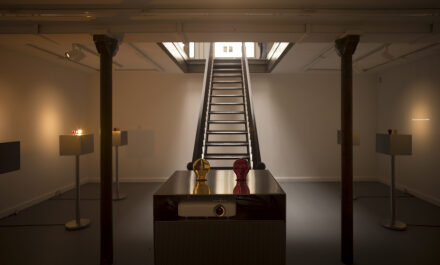
Lawrence Abu Hamdan, Errata (Installation View), via Mor Charpentier
Marking his second solo show at mor charpentier, British-Lebanese artist Lawrence Abu Hamdan continues a body of research on sound as legal evidence, focusing on the unbreakable relationship between testimony and the technology used to record it. Interested in the blind spots of global justice systems, the artist examines sound as a means to reveal historic acts of erasure and rupture. Here, that concept centers around the Nuremberg Trials, and the structures of justice and witnessing this process created and perpetuated.
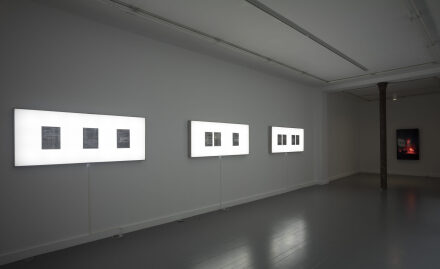
Lawrence Abu Hamdan, Errata (Installation View), via Mor Charpentier
The three works presented on the two levels of the gallery question the mechanisms of the judicial machine and explore the act of witnessing by illuminating dissonances in language and speech. In the lower ground, the immersive installation The Witness-Machine Complex focuses in particular on electroacoustic devices used to translate speech immediately into multiple languages. With the help of a system of yellow and red light bulbs, interpreters were able to react live to the statements collected by the magistrates, ordering the witnesses to raise their voices, to slow down or to repeat a particular sentence.
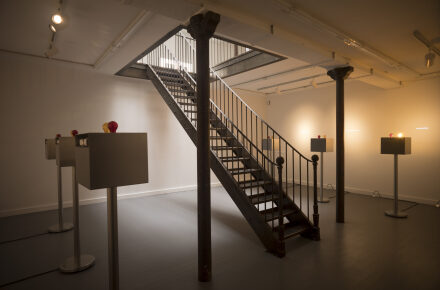
Lawrence Abu Hamdan, Errata (Installation View), via Mor Charpentier
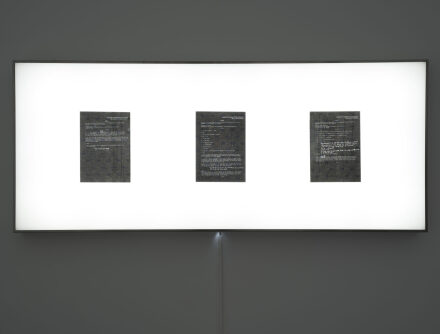
Lawrence Abu Hamdan, Errata (Installation View), via Mor Charpentier
These silent interactions – which do not appear in the written transcripts of the trials – are however clearly seen on the video recordings, which show a series of flashes due to the utilization of the bulbs. It is this impression of cacophony, absent from the official reports, that Lawrence Abu Hamdan has sought to highlight by isolating seven specific cases where the irruption of technology directly influences the testimony and modifies the manner in which it is delivered. The result is evidence of what is, in some sense, an interference rather than a recording, the technology ultimately forcing multiple readings, interpretations and repetitions that shape a testimony. Posed against the various transcripts, one can watch language and context evolve and change, underscoring peculiar effects in how these testimonies were presented, and archived.
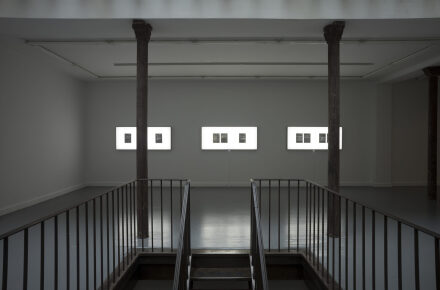
Lawrence Abu Hamdan, Errata (Installation View), via Mor Charpentier
Upstairs, a group of three light-boxes hung on the main wall of the gallery, further develops the artist’s research by replacing the actions of translators – who were so far rendered invisible – at the heart of the trial and its archival documentation. Upon the ten carbon paper sheets that compose Errata, the artist intervenes into the original transcript and reinserts the breaches, nervousness, and breaks within testimony that were redacted from it. By rejecting this misconception of a trial flowing seamlessly from voice to voice, Abu Hamdan tells a new history of this key moment in international justice, not through its official narrative but through its interruptions.
Throughout, the artist makes clear that the modes of technology and sound matter, and that the simultaneous demands of technology and justice here create gaps in representation and expression. The show closes June 18th.
– D. Creahan
Read more:
Errata [Exhibition Site]



